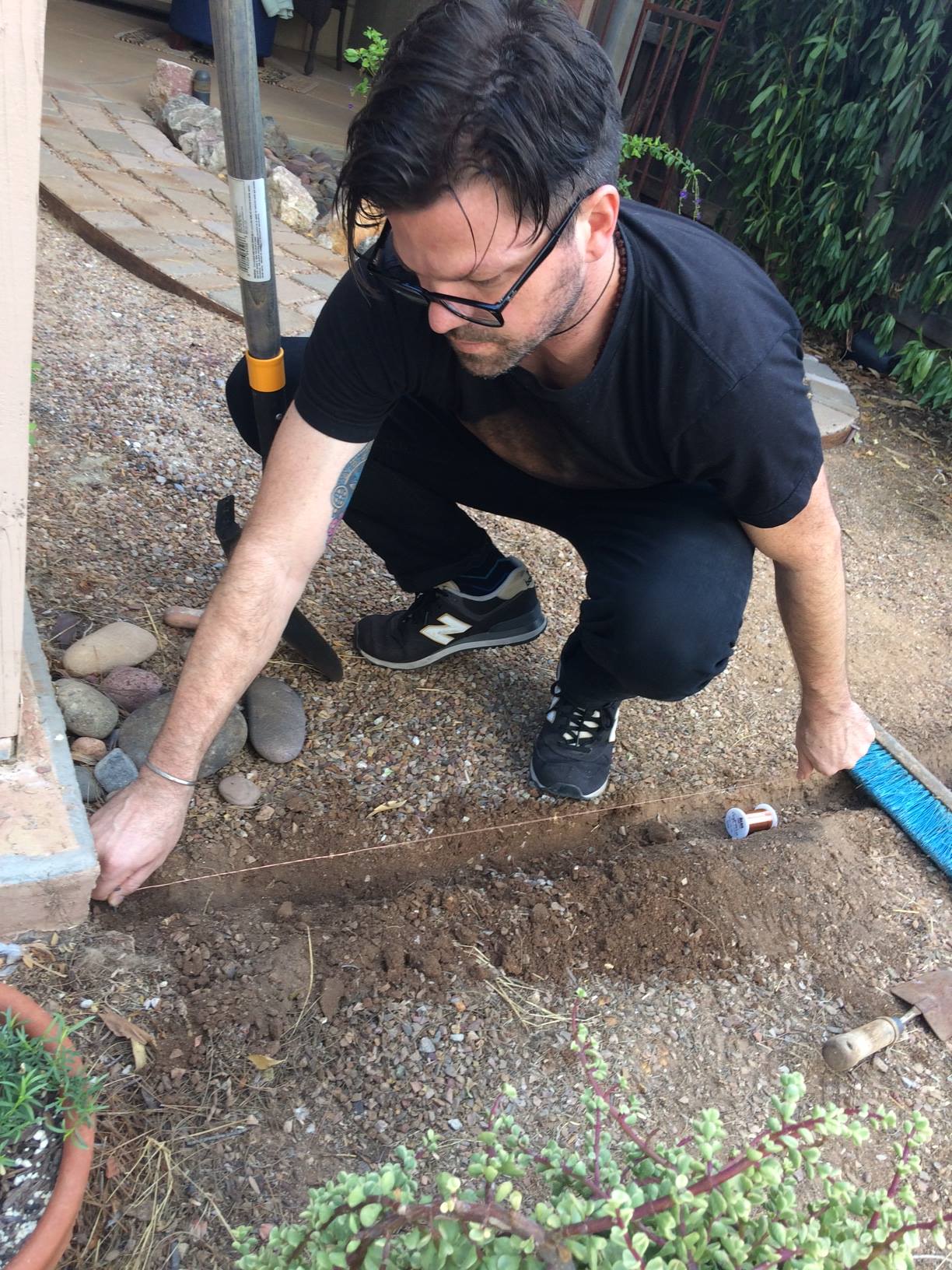If you’re anything like me, the current state of affairs has provided plenty of time to find all of the odd-looking, strange winged creatures that populate the textured paint on the walls of your bedroom.
Plenty of time to catalog and document the various species of dust bunnies under the living room table, and certainly some time to worry about Marie Kondo herself coming over to rage-kick the Jenga tower of packages filled with the results of online retail therapy dopamine hits (and increasing levels of regret) that are piling up in the corner of your room.
I’m here to tell you…there is a better way.
Using ancient Vedic wisdom, as we wait out this spinning-ball-of-death-like virus, there is a way in which we can give Marie the chance to take a break—to self-reflect on what childhood trauma brings on all this anger for her (c’mon, you know it’s buried deep underneath that million-dollar smile)—and a way to make our house a more comfortable and satisfying place to inhabit. All without breaking the bank.
Vāstu, sometimes referred to as Vedic Feng Shui, can also be called the “yoga of space and place.”
~
Bladder leaks & lackluster Sex are so 2024. Bid farewell to a weak pelvic floor with this award-winning, ingenious device + a free bag of craft Arabica coffee >
~
This is a sister science closely aligned with the principles of Ayurvedic medicine and Vedic astrology (Jyotish).
Rooted in the ancient Sthapatya Veda, a branch of the Atharva Veda, Vāstu focuses on aligning our homes and work spaces with the natural energies of the universe. We can think of our house as the antenna on a TV for which the energies of the outer universe are channeled into our inner universe.
Healthy Vāstu leads to better physical health as well as happiness and contentment for those who live or work in a space aligned with its principles.
These principles can be experienced simply when you walk into a new building and you notice that immediate feeling in your gut. Sometimes it’s the joyous “Tokimeku” feeling and everything feels peachy about the place. You feel happy, calm, and at ease.
Other times, you walk in somewhere new and find yourself getting increasingly confused, wondering whether or not you should, “walk toward the light.” Pro tip: leave that place, ASAP!
The way a space is laid out—the furniture, the amount of natural light, and the colors used on the walls—influences this feeling.
Having someone who has studied this science look at your home or office and determine the best changes to make is always the best option, but there are simple things we can do to improve the Vāstu health ourselves as well.
This natural science combines a working knowledge of the planetary, directional, and elemental energies, and with this understanding, it makes creating proper Vāstu feasible.
We can begin by looking at the front entrance of a house. For those familiar with Vedic astrology, we can see our front door as the first house (lagna) of a chart. This alone will already tell us a lot about the energetic health of the house, as well as its occupants.
Vāstu places great emphasis on the main door as this is where positive and negative energies enter or leave the house. We can easily imagine how a front door in good working condition, with a fresh coat of vibrant paint and an uncluttered walkway, would affect the energy of the building as well as those coming to visit.
The front of our house can be seen as a representation of how we present ourselves to the world and are seen by others. This would be the face if we were to use a human form to represent our home.
How many windows there are along the front of the house can tell us how “open” and welcoming we might be. It can also tell us if the house is dominated by more masculine or feminine energy.
A boring cookie-cutter stucco house front can tell us as much about its inhabitants as a shabby or irregularly shaped house front.
Simply put, the entrance should be clean, tastefully colorful, and welcoming.
Vāstu recognizes the symbiotic relationship between ourselves and the places we inhabit. We influence the health of these spaces as much as they influence us.
So with that said, let’s get to the goods. Some basic Vāstu recommendations for the front of your house are:
1. The front door should be in good working condition without cracks or chips.
Are you starting to see the yellow paint that Nana applied in 1943 coming up through the blue paint that you thought was the door’s color? Well, it’s time to get that headband out of the closet and practice “sanding the floor,” followed by “paint the fence.”
Get that buster shining again. A fresh coat of paint goes a long way in improving the health of the entrance and the house as a whole. If you can sit on your couch and see who’s outside the door through a hole and it’s not the peephole, it’s probably a good sign it’s time to get yourself a new front door altogether.
2. There should not be any creaking or loud noises when the door is opened.
Get out there and put some grease in those hinges. Don’t let your front door sound like Dracula’s coffin opening up every time someone darkens your doorway. A smooth-opening door creates an auspicious atmosphere.
3. There should be a threshold at the main door.
Your front door should not be lower than the walkway leading up to it. This is your castle we’re talking about here! Before your highness is to give an audience, guests should step up into your foyer room from outside. This also controls the smooth flow of prana into the house like a surf break—not too much and not too little. Once your guests are inside, lavish them with all the glutenous delicacies from far off lands.
4. The front door should be the largest door in the house.
Unless you’re clever enough to build that tiny door from “Willy Wonka & the Chocolate Factory” (and please let me know if you are), the front entrance should be the largest. This allows the most amount of prana to come in and pool, while the smaller back or side doors let some prana out, but not too much.
5. Avoid any obstructions near the front door (poles, trees, furniture, wires, cactus, among others).
This is considered one of the major doshas, or faults, in a residence or business. Obstructions to the front door are like walking around with a piece of paper taped over your face—it blocks the free flow of prana.
How are we supposed to see those pearly whites? Pulling cactus thorns out of a new friend is also not the best way to break the ice either.
6. Add a nameplate, lion statue, or other auspicious symbols.
A picture of a deity such as Lakshmi or Ganesha, or any other auspicious symbol that is meaningful to you can help to protect the house as well as bring prosperity. I usually recommend you choose what is most personally meaningful to your spiritual or nonspiritual path. That always outweighs textbook recommendations.
Now that we have that squared away, let’s look at the planetary and directional considerations:
North
The North direction is ruled by the planet Mercury and the presiding deity is Kuber, the keeper of wealth and prosperity. North is considered an auspicious direction for the main entrance as it brings in the energy of communication, wealth, and education.
Storing your money in this area of the house, using green-colored paint or pictures, and crawling plants are great ways to spice up the North and support its attributes.
Northwest is the direction of feminine or lunar energy if you need more of that in your life.
The Northeast is ruled by the water element. This is a good area for meditation or prayer, as well as to put pictures of your teachers or intentions you would like to bring into your life. Water is the element of life, growth, and expansion. Yellow and light blue are the favorite colors for the Northeast.
East
East is generally considered the best direction for an entrance as it’s ruled by the sun and the god Indra. Illumination, inspiration, and Soul knowledge spring from this direction. The East rules health in general, and having this direction open and light is considered ideal.
Open East-facing windows in the morning to let in the fresh air and sun rays come into your house. Use orange, red, and yellow colors on this side, and if you have a difficult work project to complete, try sitting facing East for more inspiration. This is also the area to store your medicines in. East rules masculine or solar energy.
South
The South direction relates to the planet Mars and Yama, the lord of death. Not generally considered the ideal direction for the main entrance, but don’t fret—with some work, it’s fixable.
This direction is generally kept more closed off than the North or East. You can use this area to keep pictures or personal belongings of loved ones who have passed. A small altar can also be placed here for this purpose.
The Southeast is ruled by the fire element, and is, therefore, a good area to keep electronics. Need some help with your love life? You can keep rose quartz or a salt lamp in the Southeast corner of your bedroom.
The Southwest is ruled by the Earth element and is the perfect location for the master bedroom. If your kids’ room is in this location, you may find yourself with a chore chart and the occasional time-out though.
West
The West is governed by Varuna and the planet Saturn. This direction can also be positive for stability and resource accumulation over time, but may come only with hard work. It is advised to keep heavier furniture and storage in this area of the house, particularly the Southwest.
Use blues, grays, and darker colors in this area to support Saturn. While you’re at it, hang a metal wind chime outside your house on the west side to further make this direction work in your favor. If you’re having a particularly hard run in life, place a bird feeder out there as well. Saturn rules birds (especially crows and blackbirds).
Have a guest or in-laws that you don’t want outstaying their welcome? The Northwest is ruled by the air/wind element and will make sure they keep on moving when it’s time.
Brahmasthan (center)
The center of your house is ruled by Brahma, the creator, and it is represented by the space/ether element. This area should be left open as much as possible and be free of any heavy objects.
This is the meeting point of the planetary lines in your house and rules your overall health and well-being. Many issues with health, wealth, or happiness can be corrected by observing this principle.
The Brahmasthan area should have good air and prana flow and ideally allow some natural light to reach this area.
A small bouquet of fragrant flowers or incense here is also a good remedy.
The Brahmasthan is seen as the heart of the house and reminds us that even in these difficult and anxiety-filled times, love is all around us.
Take care of your hearts; take care of your Brahmasthan.
Lastly, and most importantly. My favorite quote on Vāstu from the Brihat Samhita,
“Any site becomes auspicious for a person, providing that it gladdens their heart.”
~











Read 3 comments and reply